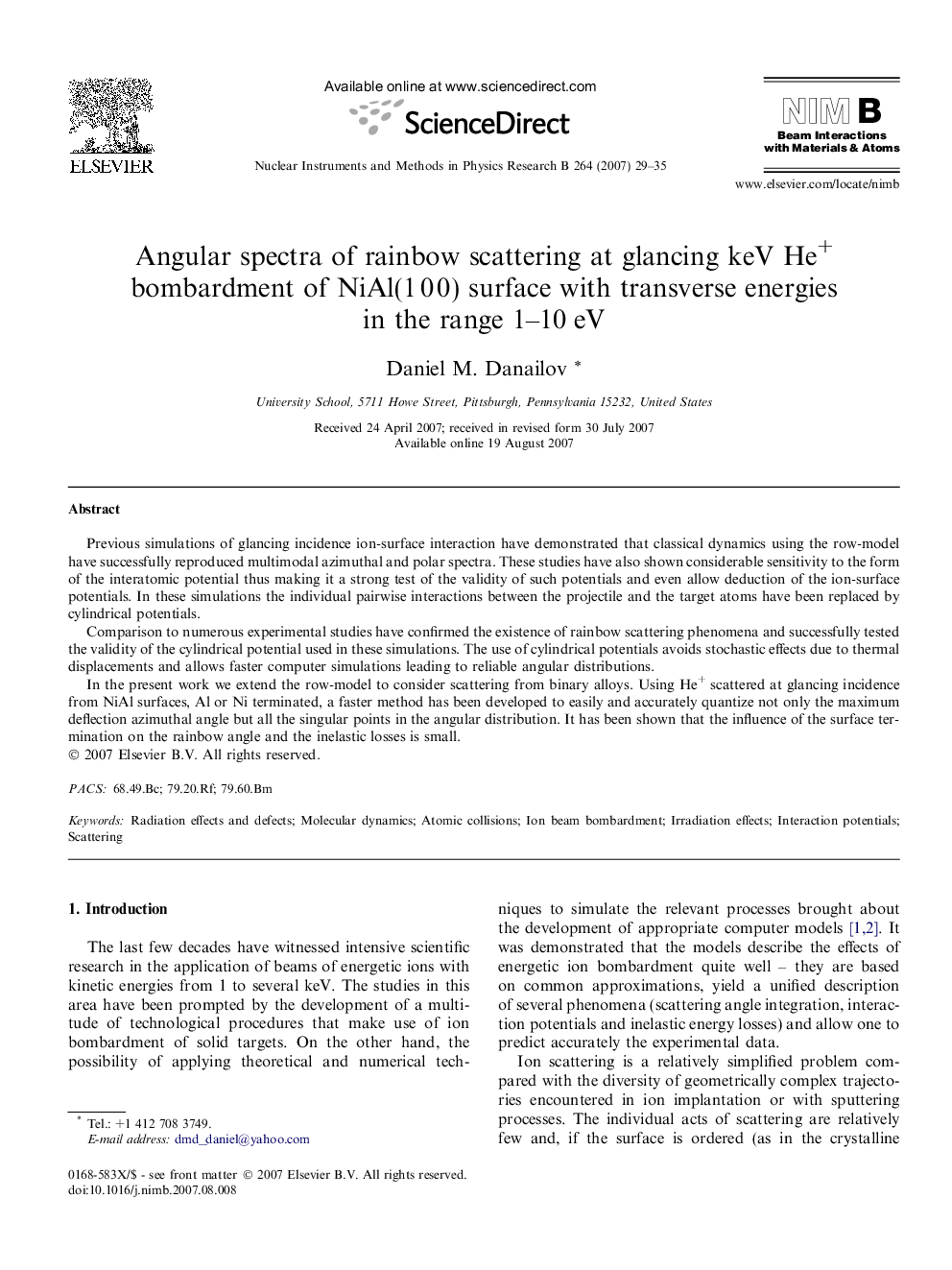| Article ID | Journal | Published Year | Pages | File Type |
|---|---|---|---|---|
| 1685566 | Nuclear Instruments and Methods in Physics Research Section B: Beam Interactions with Materials and Atoms | 2007 | 7 Pages |
Previous simulations of glancing incidence ion-surface interaction have demonstrated that classical dynamics using the row-model have successfully reproduced multimodal azimuthal and polar spectra. These studies have also shown considerable sensitivity to the form of the interatomic potential thus making it a strong test of the validity of such potentials and even allow deduction of the ion-surface potentials. In these simulations the individual pairwise interactions between the projectile and the target atoms have been replaced by cylindrical potentials.Comparison to numerous experimental studies have confirmed the existence of rainbow scattering phenomena and successfully tested the validity of the cylindrical potential used in these simulations. The use of cylindrical potentials avoids stochastic effects due to thermal displacements and allows faster computer simulations leading to reliable angular distributions.In the present work we extend the row-model to consider scattering from binary alloys. Using He+ scattered at glancing incidence from NiAl surfaces, Al or Ni terminated, a faster method has been developed to easily and accurately quantize not only the maximum deflection azimuthal angle but all the singular points in the angular distribution. It has been shown that the influence of the surface termination on the rainbow angle and the inelastic losses is small.
